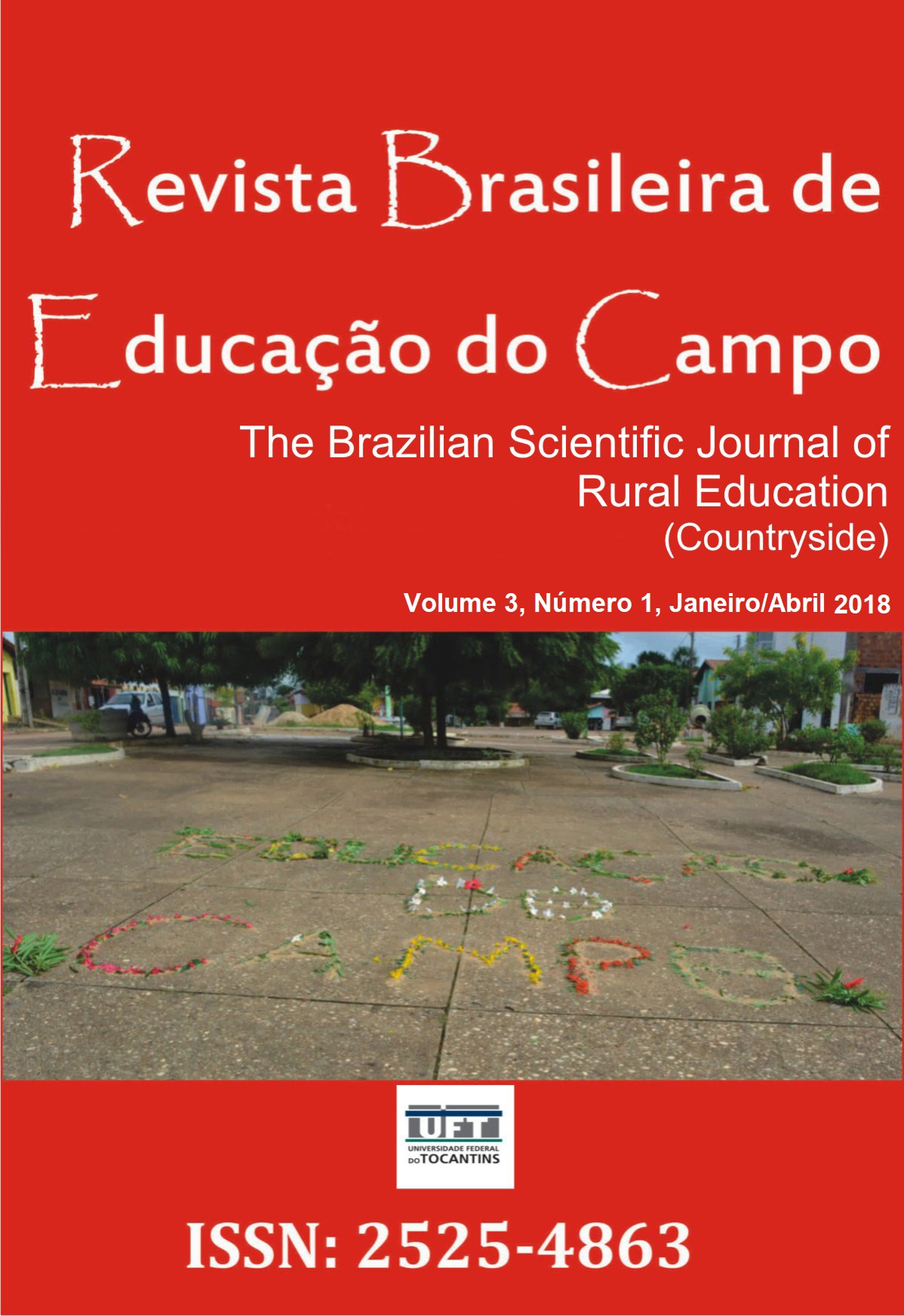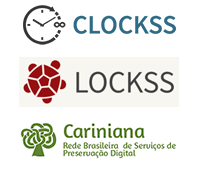Rural Education and teaching material: an analysis of History textbooks
DOI:
https://doi.org/10.20873/uft.2525-4863.2018v3n1p76Abstract
ABSTRACT. In this paper, the aim is to analyse history textbooks (LDH) used by Elementary School (6th grade) in rural schools located in the municipality of Tocantinópolis-TO. Considering that the training in the Rural Education perspective has made it possible to recognize and value knowledge and culture, seeking the emancipation of the peasants, this investigation of the selected teaching material includes an analysis of the following elements of the textbooks: (1) contents; (2) activities; (3) teacher-student interaction; and (4) images. The research is of bibliographic nature and qualitative approach. The corpus consists of two LDHs: one produced for the Programa Escola Ativa and another for schools located in urban areas, but also used in the rural schools of research context. In view of the reality of rural schools and the social, political and economic context in which the peasants have lived, the research results have revealed that only one of the LDHs analyzed follows the principles defended by Rural Education.
Downloads
References
Arboit, A. A., & Pacheco, L. M. D. (2013). Exclusão social no mundo rural: ideologia e poder nos livros didáticos. Vivências: Revista Eletrônica de Extensão da URI, 9(16), 140-152.
Arroyo, M. G. (2011). A Educação Básica e o Movimento Social do Campo. In Arroyo, M. G., Caldart, R. S., & Molina, M. C. (Orgs.). Por uma educação do campo (pp. 08-86). Petrópolis, RJ: Vozes.
Arroyo, M. G. (2013). Currículo, território em disputa. Petrópolis, RJ: Vozes.
Berbat, M., & Feijó, G. (2016). Diálogos com a Educação do Campo: o livro didático em questão. Revista Brasileira de Educação do Campo, 1(2), 476-494. DOI: https://doi.org/10.20873/uft.2525-4863.2016v1n2p476
Bogdan, R. C., & Biklen, S. K. (1994). Investigação qualitativa em educação: uma introdução à teoria e aos métodos. Porto: Porto Editora.
Brasil. (2010). Escola Ativa: Projeto base. Brasília, DF: MEC/SECAD.
Brasil. (2012). Guia de livros didáticos: PNLD Campo 2013 - ensino fundamental. Brasília, DF: MEC/SECADI.
Brasil. (2013). Guia de livros didáticos: PNLD 2014 - história: ensino fundamental: anos finais. Brasília, DF: MEC/SEB.
Caldart, R. S. (2000). A escola do campo em movimento. In Benjamin, C., & Caldart, R. S. (Orgs.). Projeto Popular e escolas do campo (pp. 24-48). Brasília, DF: Articulação Nacional Por uma Educação Básica do Campo.
Carie, N. S. (2008). Avaliações de Coleções Didáticas de História de 5ª a 8ª Série do Ensino Fundamental: um contraste entre os critérios avaliativos dos professores e do Programa Nacional do Livro Didático. (Dissertação de Mestrado). Universidade Federal de Minas Gerais, Belo Horizonte.
Costa, P. F. S. (2014). Análise do discurso dos livros didáticos para a Educação do Campo: aspectos semiolinguísticos da contextualização. (Dissertação de Mestrado). Universidade Federal de Minas Gerais, Belo Horizonte.
Filgueiras, J. M. (2013). A produção de materiais didáticos pelo MEC: da Campanha Nacional de Material de Ensino à Fundação Nacional de Material Escolar. Revista Brasileira de História, 33(65), 313-335.
Freitas, N. K., & Rodrigues, M. H. (2008). O Livro Didático ao longo do tempo: a forma do conteúdo. Pesquisa, 3, 26-33.
Pellegrini, M., Dias, A., & Grinberg, K. (2012). Vontade de Saber História – 6° ano. São Paulo, SP: FTD.
Silva, C. (2011). Pedagogia da Alternância: um estudo do gênero Caderno da Realidade com foco na retextualização. (Dissertação de Mestrado). Universidade Federal do Tocantins, Tocantins.
Silva, L. Q. (2010). Caderno de Ensino e Aprendizagem: História 5. Brasília, DF: MEC/SECAD.
Silva, W. R., et al. (2014). O que são materiais didáticos? Uma abordagem na Linguística Aplicada. In SILVA, W. R., Santos, J. S., & Melo, M. A. (Orgs.). Pesquisas em Língua(gem) e demandas do ensino básico (pp. 263-293). Campinas, SP: Pontes Editores.
Ströher, C. E. (2012). Aprendendo com imagens: a função das fontes visuais nos livros didáticos de História. Aedos, 11(4), 46-70.
Published
How to Cite
Issue
Section
License
Proposal for Copyright Notice Creative Commons
1. Policy Proposal to Open Access Journals
Authors who publish with this journal agree to the following terms:
A. Authors retain copyright and grant the journal right of first publication with the work simultaneously licensed under the Creative Commons Attribution License that allows sharing the work with recognition of its initial publication in this journal.
B. Authors are able to take on additional contracts separately, non-exclusive distribution of the version of the paper published in this journal (ex .: publish in institutional repository or as a book), with an acknowledgment of its initial publication in this journal.
C. Authors are permitted and encouraged to post their work online (eg .: in institutional repositories or on their website) at any point before or during the editorial process, as it can lead to productive exchanges, as well as increase the impact and the citation of published work (See the Effect of Open Access).















